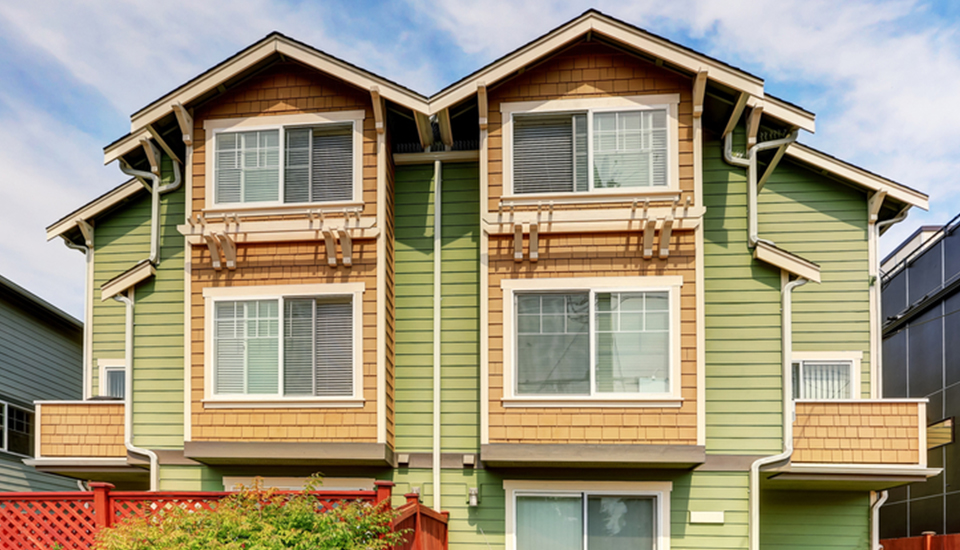Owning a home is expensive. The dozens of little money pits coalesce into big bills each month, draining your finances. It doesn’t have to be that way, though. While you may never eliminate all your monthly expenses, you can take these six steps to mitigate the impact and add a little cushion to your bank account.
1. Use energy-efficient light bulbs.
Although each individual lightbulb uses a fairly small amount of energy, adding up the costs for every lightbulb in your house over the year, plus the cost of replacements, can be an eye-opener. Replacing all the lightbulbs in your house with efficient LED bulbs can save as much as $100 per year and requires next to no effort.
Picking the perfect house is the hard part. Getting a mortgage can be easy.
2. Turn off lights and unplug appliances.
It turns out your parents were right — you should turn off the lights, for several reasons, when you leave the room:
- Bulbs have limited lifespans, and if you’re leaving them on but not using the light, you’re literally wasting their life away.
- They draw electricity, which can add up over time, especially if you didn’t take the previous advice to go with energy-efficient bulbs.
- Lastly, only a tiny fraction of that energy actually goes towards lighting the bulb. The rest is given off as heat, making your AC work harder to keep a room cool, which adds to higher monthly costs.
If you’re going to be gone for a while — say, a weekend trip — it can also be worthwhile to unplug appliances. Devices with digital displays or remote controls, in particular, can draw power even while “off.” These are known as energy vampires. Again, the savings may not be huge, but they can add up.
3. Switch to smart lighting.
You can combine tips one and two and kill two birds with one stone by investing in a smart lighting setup. Not only can you have the lights turn on and off automatically (or do it remotely from your phone), but the bulbs are typically very efficient LEDs. So, while they can be a little pricey up front, the savings can add up. Plus, they’re just plain convenient.
4. Install a smart thermostat.
AC and heating are one of the largest hits on energy consumption, accounting for nearly 50 percent of the energy use in a typical home. Needless to say, many people obsess over their thermostat settings for good reason. A smart thermostat that learns your preferences is convenient and saves you money in the long run. Nest, one of the biggest names in smart home appliances, claims its Learning Thermostat pays for itself after two years — giving you only savings from there.
Calling all homebuyers who are tired of the delays. Cornerstone cares about getting you into your new home on time, and we’re lending in 40 states.
5. Invest in a home security system.
Installing a home security system is not only smart from a safety perspective but also a great way to save on insurance premiums. Your homeowner’s insurance premium can cost a substantial amount annually, but know that the Electronic Security Association found discounts up to 20 percent if a home had a monitored security system.
If you go for a monitored system, there will likely be a monthly fee for that as well — typically around $35–$53 for the better systems. So, you’ll have to weigh those costs against the insurance savings and the added security the system can provide.
Needless to say, a security system requires a little larger investment than the previous tips, but it also carries additional benefits. A security system is an extremely effective deterrent to burglars with as many as 83 percent of criminals looking for a security system before attempting a burglary.
6. Go solar.
If you really want to invest in lowering your monthly costs, you can install solar panels to produce your own energy. Although a home solar setup is expensive up front, it can more than pay for itself over its lifetime. The average cost of a 5-kilowatt solar panel system is around $11,060 these days, which seems like a lot but is actually 9 percent lower than just a year ago.
The average lifetime savings over twenty years changes depending on what city and state you live in, some reaching as high as $90,000. So, while solar is more of a long-term investment than a way to save a quick buck, it can really pay off over the long haul. And the payback time is also continuing to drop. Even if you’re not ready to commit right now, keep an eye on this option!
These tips just scratch the surface of ways to save on your monthly utilities, but it should be plenty to get you started. Your next challenge will be to figure out what to do with all the extra money.
If you’re ready to buy or refinance your house, we’re ready to help. Get prequalified online.
By Sage Singleton, SafeWise home safety expert. Sage is a freelance writer who enjoys teaching individuals, families, and communities about safe home and lifestyle habits. In her free time, she enjoys wedding planning, traveling, and learning French.
For educational purposes only. Please contact your qualified professional for specific guidance.
Sources are deemed reliable but not guaranteed.

